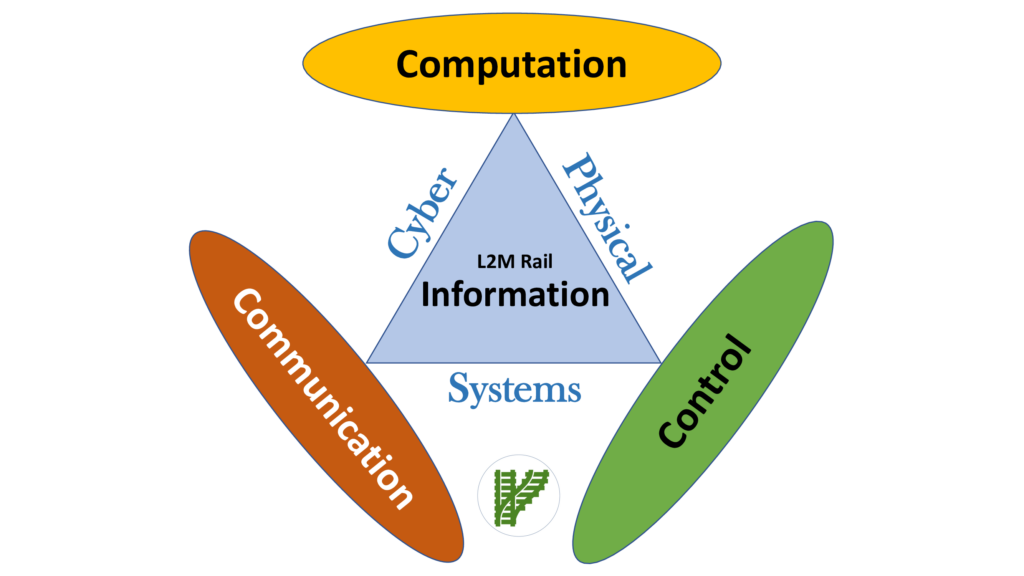
Cyber-Physical System, or CPS for short, is one of the enabling technologies of the fourth industrial revolution (Industry 4.0) and can be viewed as a natural evolution of Embedded Systems. The original definition for CPS as provided by the UC Berkley faculty is as follows:
“CPS is an interacting network of physical and computational components that form the basis of smart services. In other words, CPS can be understood as embedded systems together with the physical systems.”
In 2011, the German National Academy of Science and Engineering suggested a more exhaustive definition for CPS as a system which:

Fig.1: Three main components of Cyber-Physical Systems
Embedded Systems have traditionally been designed as ‘One Device – One Function’. However, with the advent of standards such as AUTOSAR, designers began to think of distributed networked embedded systems where devices are dynamically linked to each other and to the physical systems of sensors and actuators through software. Along with this evolution, significant developments in the domains of sensor technology and wireless technology have laid the foundation for the development of complex Cyber-Physical Systems. The CPS includes a host of digital technologies like Artificial Intelligence, IoT, Big Data &Analytics, Machine Learning, Cloud Computing and 5G. Industries, particularly in India, are yet to fully exploit the potential of CPS for enhancing productivity by enabling decisions on a real-time basis.
The main strength of CPS is in combining the capabilities of the ‘cyber world’ with those of the ‘physical world’ to solve problems that neither could solve alone. But the ‘physics’ for these two worlds are not the same! Any new technology brings new challenges and CPS is no exception. As mentioned earlier, CPS include embedded systems, engineering HMIs, and wireless networks. Adequate expertise is available in all these domains, but cross-domain integration brings out issues not dealt with earlier. Further, there is no established engineering methodology for CPS. Analysis and validation became challenging in view of distributed algorithms and shared control, and designers have the additional task to create methodologies for safety assessment.
CPS provides new functionalities to improve quality of life and enable technological advances in critical areas, such as, – transportation, traffic flow management, predictive and perspective maintenance, personalized healthcare, emergency response, defence and homeland security, emergency response etc.

Fig2: Flow of data in a Cyber-Physical System
Cyber-Physical Systems used in the railway domain are called Railway CPS, which are among the most complex Cyber-physical systems being designed by humans. Railway CPS observes, plans, controls and manages the trains and the track-side equipment to meet operational goals without compromising on safety requirements. These are the combination of several sub-systems (products), specifically designed for the Railway industry, with an aim to develop safe and reliable transportation systems.
Railway CPS is the One-Stop Solution for most of the challenges that plague today’s Rail industry, which includes, –

Fig 3: Schematic diagram of Cyber-Physical Systems for Railways
Railway Transportation systems are undergoing a fundamental shift towards more controlled operations to improve efficiency and safety. The railway industry could leverage this IT advancement by, –
Thus, the CPS is the key to improving the operational efficiency of railways. The main advantages of a railway CPS include, –
Railway Transportation systems are undergoing a fundamental shift towards more controlled operations to improve efficiency and safety. We at L2M have done pioneering work in bringing the CPS for management of Industrial Railway Sidings and have managed the challenges successfully. Our team of scientists have worked for the last four years to develop CPS for the railway domain, learning new concepts and unearning some existing dogmas in the process.
The three Cyber-Physical Systems developed with our in-house R&D, viz., Cyber Signaling System (CSS), Axel Counter Plus (ACP) and Wheel Impact Load Detection System (WILD) has been deployed at our customer sites. Proofs of the concept have been completed for most other Railway CPS which are at various stages of development.